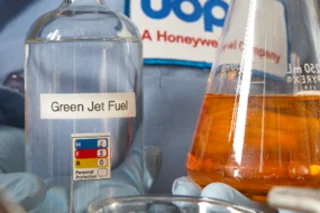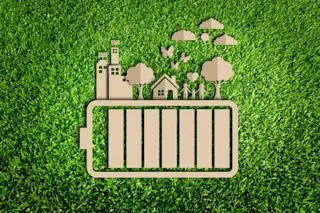Somewhere between fifth and sixth gear in this roaring, turbo-charged Audi A5, I realize I'm not that excited about electric cars.
As an eco-conscious citizen, I should be a little ashamed of my attachment to pistons and gears. But in this test drive, I don't have to be. While the Audi I'm test-driving is a regular production car, the fuel inside it is a new, ultra-potent kind of biofuel that has only a quarter of the per-gallon carbon footprint of petroleum-derived fuel. Sure, that doesn't sound that exciting compared to a zero-emission electric car—until you consider that this new fuel doesn't require new car factories, new fueling infrastructure, or the turnover of our existing fleet of vehicles, all of which are expensive, massively polluting ventures. Could it be that the greenest car on the market is already in your garage—it just needs a new kind of juice?
The New Plant ...















